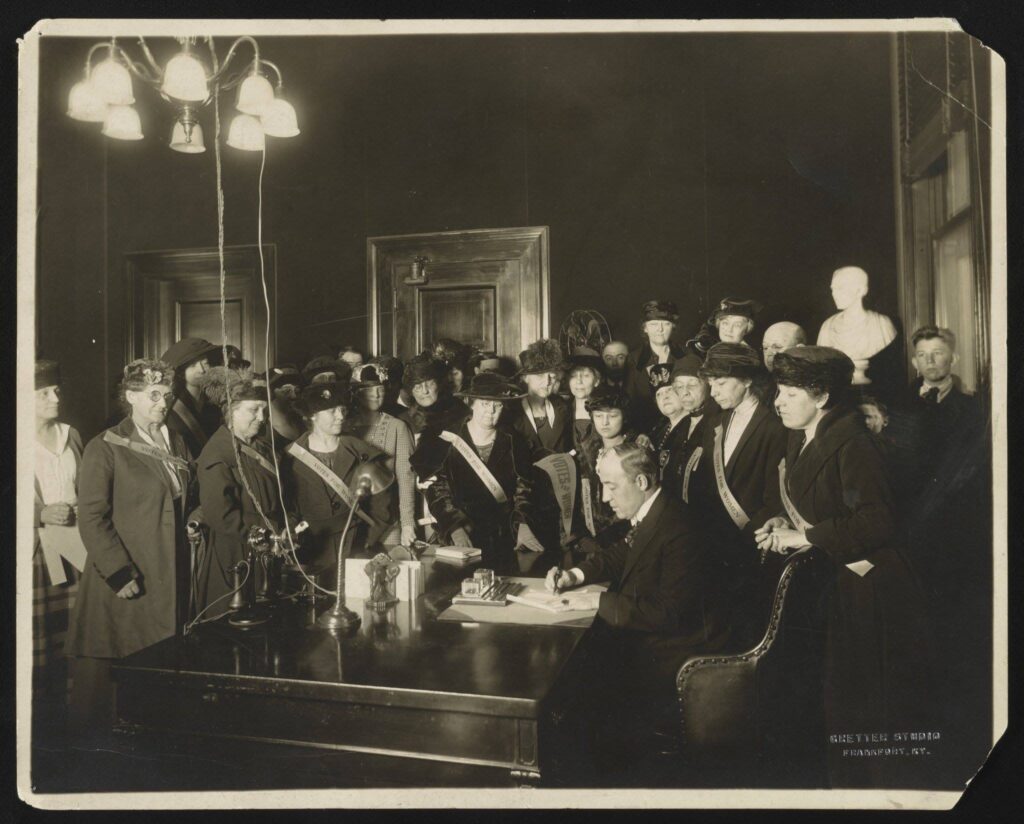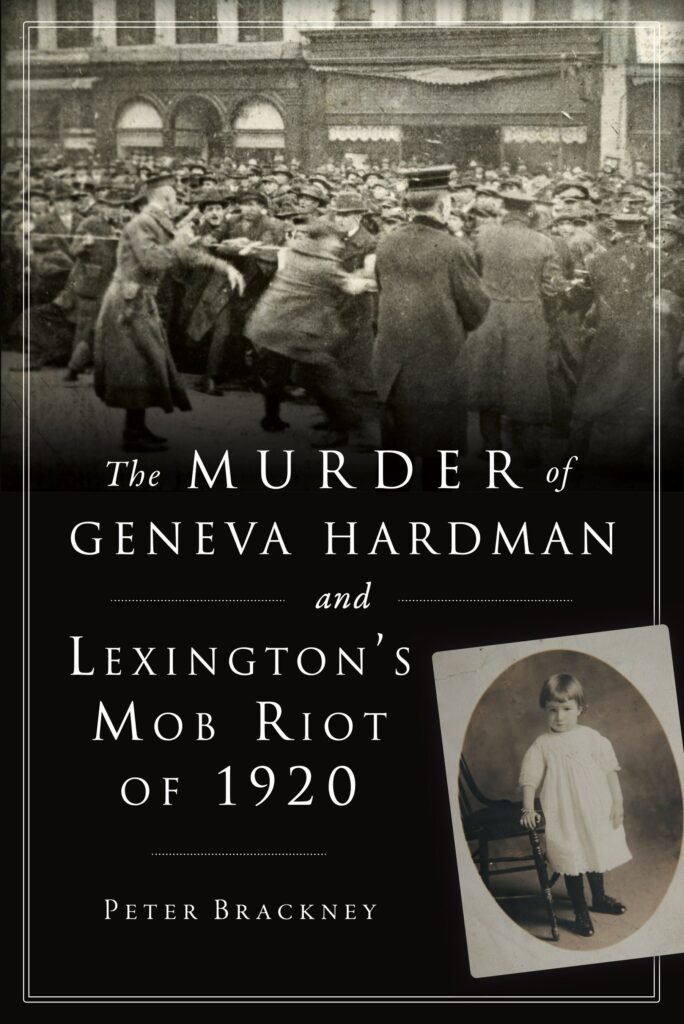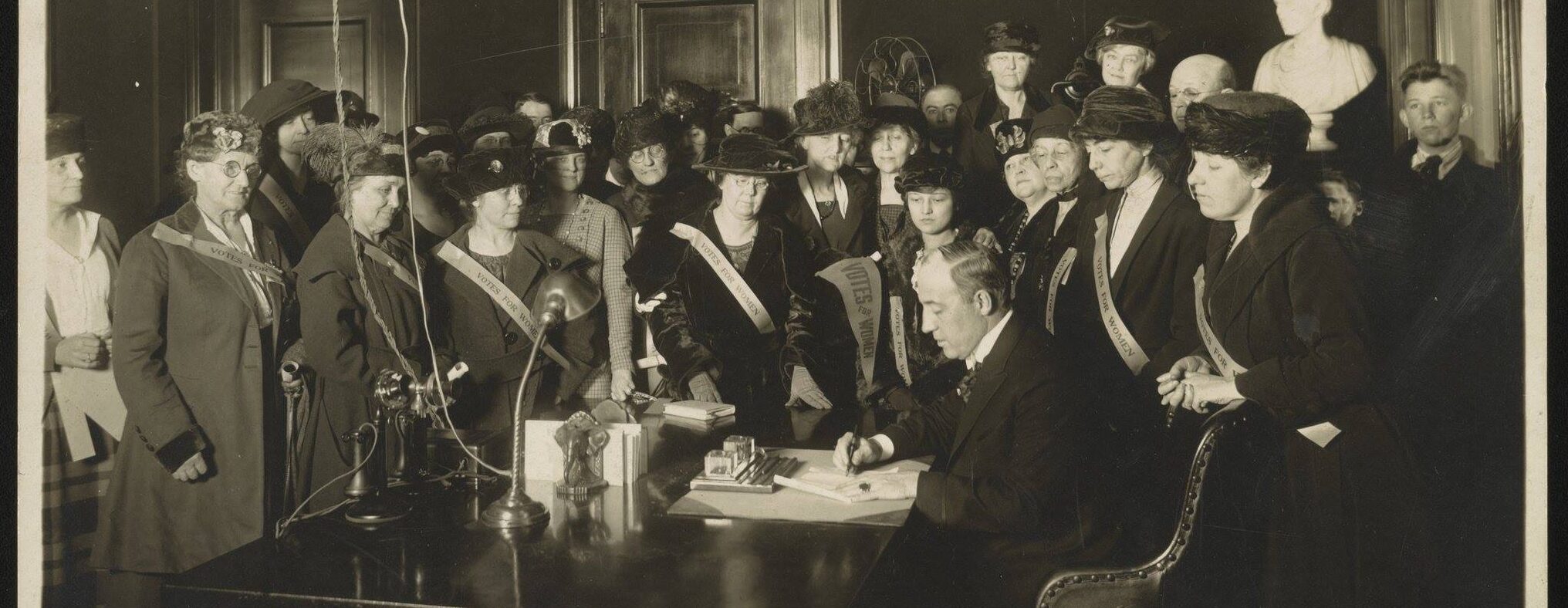A photograph making its way around Kentucky-history-loving Facebook is of Governor Edwin P. Morrow signing Kentucky’s adoption of the Nineteenth Amendment to the Constitution guaranteeing women the right to vote.
The landmark photograph was taken on January 6, 1920, and the photograph made its rounds (of course) because of the centennial celebration of the occasion.

Edwin P. Morrow was a progressive Republican governor elected in 1919 by defeating the sitting governor, James D. Black. I’ve recently learned a great deal about Governor Morrow as he was the sitting governor during The Murder of Geneva Hardman and Lexington’s Mob Riot of 1920.
Morrow was born in Somerset, Kentucky on November 27, 1877, to one of the founding families of the Republican nParty in Kentucky. His father helped form the party her and was a staunch supporter of Abraham Lincoln’s 1860 presidential campaign and was the party’s gubernatorial nominee in 1883.
A lawyer by training, Morrow took the appointment of defending a man accused of robbing a church treasurer of thousands in church funds and thereafter killing him. In the wake of the sensational murder, the accused confessed. But Morrow “soon showed that Moseby’s confession has been extorted, and a very great deal of the testimony as presented was faulty.” The acquittal that followed was only the beginning of Morrow’s rising star.
He went on to serve as his hometown’s city attorney before being appointed as the U.S. District Attorney for the Eastern District of Kentucky by President William Howard Taft.
In his race for governor in 1919, Morrow campaigned on the platform that he “was not bound to any man, or group of men” … making “no pledges nor promises to secure his nomination.” Morrow promised “to bring a new and better day to Kentucky.” His inaugural address sought the guidance of God for the “strength to do the right” and for sustenance “in the administration of law and justice.”
The administration of law and justice would prove to be one of Governor Edwin Morrow’s most shining legacies. The February 1920 murder of Geneva Hardman and the ensuing trial of Will Lockett shone a light on Governor Morrow and his resolve. The New York Evening World commented that Morrow “seems to be a man with a brain and a spinal column, both in good working order and in their proper places.” Morrow exercised both of these faculties during the events that unfolded in Lexington in early 1920 and his role cannot be overstated.
Morrow served one term and died in 1935. He is buried in the Frankfort Cemetery.

This post contains excerpts from Peter Brackney’s The Murder of Geneva Hardman and Lexington’s Mob Riot of 1920 (The History Press, Charleston, SC: 2020).
For more information about the book or to schedule an event with the author, click here.

